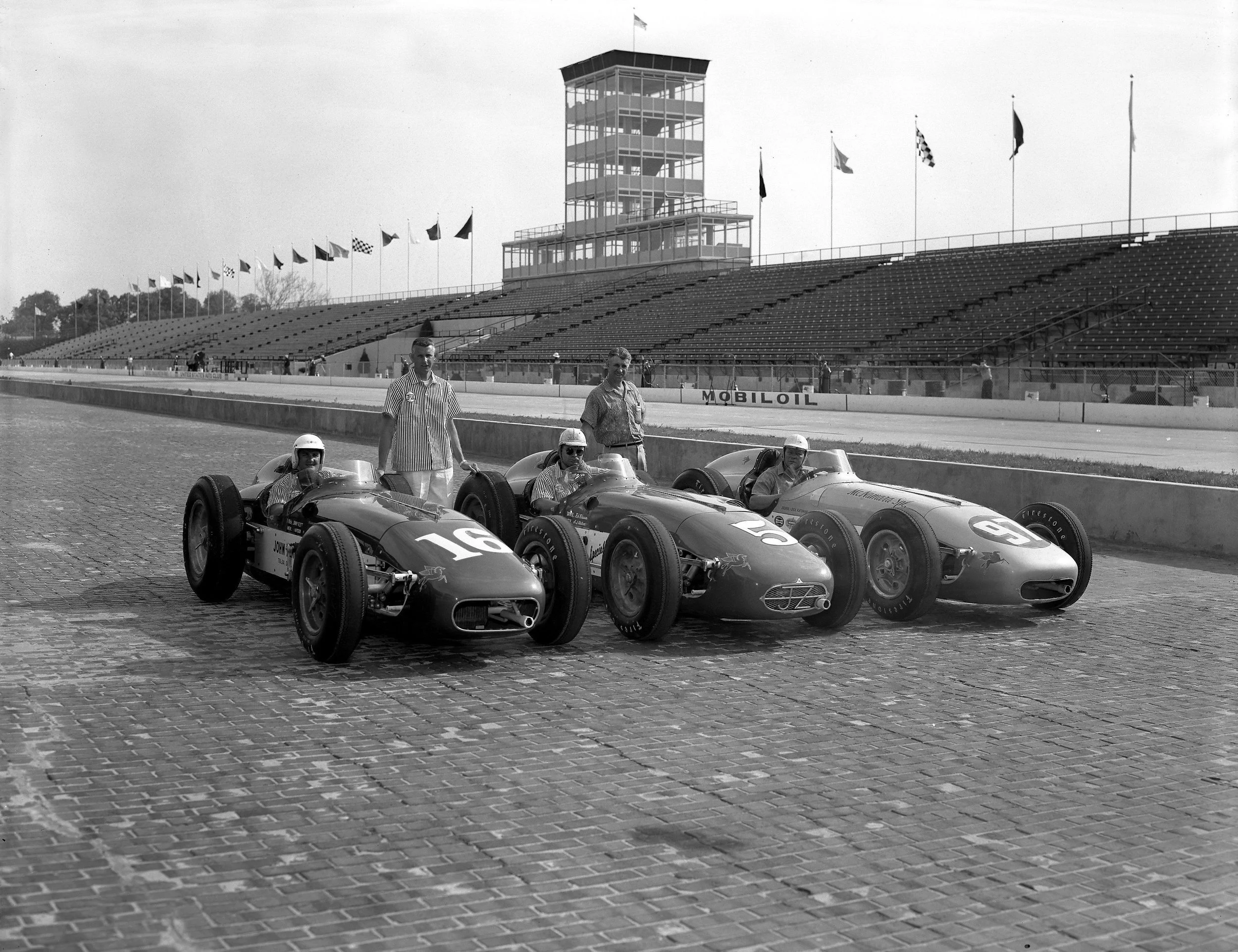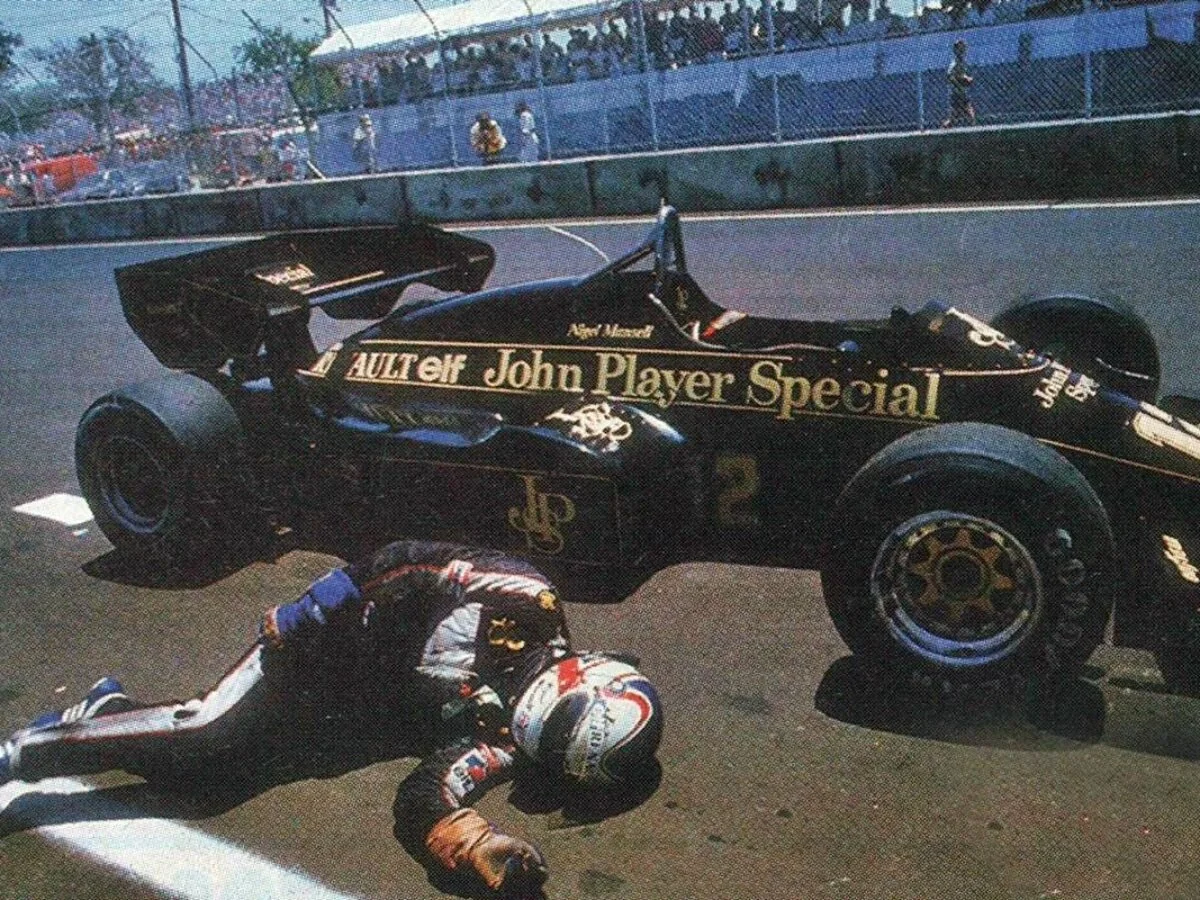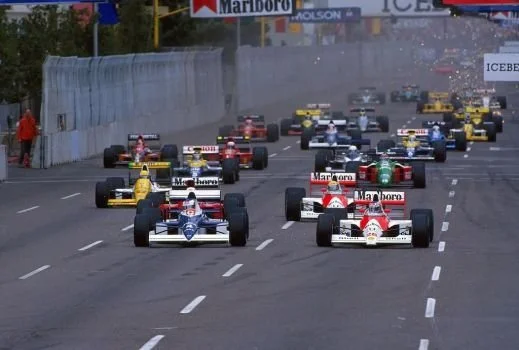Racetracks of American F1
Formula 1 has a long and fascinating history in the United States. It all started at the iconic Indianapolis Motor Speedway and has continued at the Miami International Autodrome. For over 70 years, the United States has been hosting Formula 1 races. First, the famous Indy 500 was part of the World Championship until 1960. Then came the notorious races at Watkins Glen, the exciting street courses in the 80s, and the return to road courses at Indy and COTA. These tracks have played a crucial role in shaping and advancing the sport, turning Formula 1 into a global phenomenon. Now, let's take a closer look at the tracks that have hosted Formula 1 races since the sport's beginning in the United States.
Indianapolis Motor Speedway: (1950-1960) The Indianapolis 500 was part of the Formula 1 World Championship from 1950 to 1960. At that time, the Indianapolis 500 was the premier race in the United States and was included in the World Championship to help promote the sport in North America.
During this time, the race was open to Formula 1 cars, and several European teams and drivers made the trip to Indianapolis to compete. However, due to the significant differences between the track and the European circuits, many teams needed help to adapt to the unique demands of the Indianapolis Motor Speedway. In addition, the American race's different regulations and technical requirements made it difficult for the European teams to be competitive.
However, after the 1960 race, the Indianapolis 500 was removed from the Formula 1 World Championship due to disagreements over regulations and technical requirements. Nevertheless, the race continued as a standalone event and remained one of the most prestigious events in motorsports to this day. Famous F1 names like Clark, Hill, Andretti, Villeneuve, Cheever, Montoya, and recently ex-F1 Driver Marcus Ericsson won the Indy 500 in 2022.
The Start of the US Grand Prix at Sebring International Raceway 1959
Sebring International Raceway: (1959) Sebring International Raceway in Florida made a one-off appearance on the Formula 1 calendar in 1959. The first United States Grand Prix of the modern era doubled as the final race of the 1959 season and saw a championship showdown between Jack Brabham, Stirling Moss, and Tony Brooks. 22-year-old Bruce McLaren won the race in a Cooper.
Riverside International Raceway: (1958/1960)This California track held two championship-sanctioned Formula 1 races, one in 1958, the other in 1960. It was a popular venue among drivers, but the remote location made it difficult for fans to attend. Riverside would also host a series of non-championship-sanctioned F1 races. Sebring race promoter Alec Ulmann decided to move the race from Florida to the Californian coast the following year. The chosen venue was Riverside International Raceway, a challenging new circuit in the desert around 50 miles east of Los Angeles. Despite six American drivers on the grid, including popular Riverside local Dan Gurney, only 25,000 fans turned out for the 1960 United States Grand Prix. Attendance at the season's final race wasn't helped by the absence of Ferrari, who decided not to travel to the race after losing the driver's title to Jack Brabham. Nevertheless, the few fans who did attend were treated to an exciting spectacle as Stirling Moss won the race for Lotus. Riverside went on to host NASCAR, IMSA, and IndyCar before being closed in 1989 and turned into a shopping mall.
Riverside 1960
Watkins Glen International: (1961-1980) The Glen hosted the United States Grand Prix from 1961 to 1980. In 1961, Watkins Glen hosted the final round of the Formula One World Championship. The race saw the participation of seven American drivers, and Innes Ireland, a British driver in a Lotus-Climax, emerged as the winner of the 1961 United States Grand Prix. Dan Gurney, an American driving a Porsche 718, secured second place. Unfortunately, Ferrari, who had already clinched both the Driver's and Constructor's World Championships, decided not to compete in the United States GP due to the tragic death of Wolfgang von Trips at the 1961 Italian Grand Prix. This decision deprived Hill, the newly crowned World Champion, of participating in his home race. Hill, however, appeared as the Grand Marshal of the event.
The United States Grand Prix at Watkins Glen became an annual autumn tradition, attracting large crowds of knowledgeable racing fans to Upstate New York. The race gained popularity among teams and drivers because of its outstanding prize money, often surpassing that of other races combined. It received the Grand Prix Drivers' Association award for the best organized and best staged GP of the season in 1965, 1970, and 1972.
A notable figure at the USGP in Watkins Glen was the race starter, Richard Norman "Tex" Hopkins. Easily recognizable in his lavender suit and with a big cigar in his mouth, Hopkins gave his all to the job. He would walk across the front of the grid with his back to the field, then turn around and jump into the air while waving the national flag to start the race, meeting the winner at the finish, and waving the checkered flag as the car crossed the line.
Before the 1971 race, significant changes were made to the circuit, extending it from 2.35 mi (3.78 km) to 3.377 mi (5.435 km) by adding four corners in a new section known as the 'Boot.' Despite these improvements, the track became unsafe for the increasingly faster and stiffer ground-effect cars of the late 1970s, resulting in some terrible and sometimes fatal accidents, including those that claimed the lives of Helmut Koinigg and François Cevert. In May 1981, several months after Alan Jones won the 1980 race for Williams, the International Auto Sports Federation removed the race from its schedule because the track had failed to pay its $800,000 debt to the teams.
“Tex” Hopkins on the Starting Grid at Watkins Glen
Long Beach Street Circuit: (1976-1983). The United States Grand Prix West was a Formula 1 race in Long Beach, California, from 1976 to 1983. It was held on a street circuit in the city, known as the Long Beach Grand Prix Circuit, which was renowned for its picturesque location and challenging layout. The United States Grand Prix West quickly became a popular event on the Formula 1 calendar. The race attracted large crowds, with spectators enjoying the unique atmosphere created by the combination of high-speed racing and the coastal setting. After the 1983 season, financial difficulties led to the discontinuation of the United States Grand Prix West. However, the Long Beach Grand Prix Circuit continued to host other motorsport events. One of them is the Long Beach Grand Prix, an IndyCar race that has become one of the premier events in American motorsport.
1977 US Grand Prix West. James Hunt Marlboro Mclaren airborne.
Caesars Palace Street Circuit: (1981-1984). Caesars Palace Grand Prix was a Formula One race in the parking lot of the Caesars Palace Hotel in Las Vegas, Nevada, in the early 1980s, referred to as the "Caesar's Palace car park." The race was held from 1981 to 1984 and was the season's final race for three of those four years. The Caesars Palace Grand Prix was famous during its brief four-year run, attracting many spectators. However, due to concerns over safety and the high cost of organizing the race, it was canceled after the 1984 season.
Detroit Street Circuit: (1982-1988). The Detroit Grand Prix was held in Detroit, Michigan, from 1982 to 1988 as part of the Formula 1 World Championship. It took place on a temporary street circuit built around the Renaissance Center, a group of skyscrapers that served as the headquarters of General Motors. The course was known for being tight, bumpy, and demanding, with few opportunities for overtaking.
The inaugural race took place on June 6, 1982, and was won by John Watson, driving for McLaren. The last Detroit Grand Prix in Formula 1 occurred on June 19, 1988. Ayrton Senna, driving for McLaren-Honda, won the race, making it his third victory in Detroit. The circuit's demanding nature and the challenging conditions often made the race a test of both driver skill and car durability.
After 1988, the Detroit Grand Prix dropped from the Formula 1 calendar due to financial difficulties and logistical challenges. However, the city of Detroit continued to host other racing events, including the IndyCar series.
1986 Detroit Grand Prix - Eddie Cheever Haas-Lola
Dallas Street Circuit: In 1984, the Dallas Grand Prix was held on a temporary street circuit in the Fair Park/State Fairground location. Poor track conditions mixed with the 100+ degree weather in July, the race was called "the worst race in F1 history." The track was torn apart the day before due to the Can-Am race causing damage. Contributed to the track's surface breaking up and tested the drivers' stamina to the limit. Problems with the poor track surface were exacerbated by the decision to allow an entire field of Canam cars to damage the track even more on Saturday evening, prompting a hasty overnight resurfacing that wasn't finished until 30 minutes before the start of the race. Despite persistent rumors that the race would be canceled, the capacity crowd of 90,000 fans was not to be disappointed. In a race of attrition that saw almost half the field eliminated after spinning out and hitting the unforgiving concrete barriers, Keke Rosberg achieved his only victory of the season with help from a unique weapon – the Finn was wearing a water-cooled skullcap under his helmet to battle the heat. Less lucky was early leader Nigel Mansell, whose Lotus expired on the final corner. The Brit ended up in hospital with dehydration after trying to push his car across the line!
Nigel Mansell collapses while pushing his car over the finish line of the Dallas GP
Phoenix Street Circuit: (1989-1991) The Phoenix street circuit was in downtown Phoenix, Arizona, utilizing the city streets surrounding the Phoenix Civic Plaza and America West Arena. The Phoenix Circuit was a temporary street circuit known for its bumpy and challenging layout. However, it was relatively short, measuring around 2.36 miles (3.8 kilometers). The track featured a mix of long straights, tight corners, and some elevation changes. Aryton Senna won two of the three races held in Phoenix; Eddie Cheever would get his last podium in F1 at his home grand prix in 1991, placing third with the USF&G Arrows team. Cheever's podium in Phoenix would be the last time an American driver would podium at a US-based grand prix. The United States Grand Prix in Phoenix was a regular fixture on the Formula 1 calendar until 1991.
Indianapolis Motor Speedway (IMS): (2000-2007) Formula 1 would return after a 40-year absence to The iconic "Brickyard" hosting the United States Grand Prix from 2000 to 2007. Track renovations began in 1998, and the circuit used part of the famous oval and a new infield section. Michael Schumacher and the Ferrari team won the inaugural 2000 Grand Prix, and Ferrari would have a dominant stint at IMS, winning six of the eight races held at the circuit.
Unfortunately, the relationship between Formula 1 and the Indianapolis Motor Speedway would be tarnished due to the tire controversy in 2005, leading to the event's demise, the race was soon removed from the calendar, and Formula 1 has not returned to the iconic speedway since. The 2006 race saw American Driver Scott Speed compete in a home race, the first since Eddie Cheever in 1991 Phoenix. 2007 was the last year the race was held at IMS; Lewis Hamilton won Mclaren.
IMS Road Course construction began in 1998
Circuit of the Americas (COTA): (2012-2026) The current home of the United States Grand Prix, COTA, is a purpose-built facility in Austin, Texas. The track features a mix of high-speed corners and technical sections and has become a popular destination for fans and drivers since its debut in 2012. The 2022 United States Grand Prix was the largest attendance, with a weekend attendance 440,000. Formula One signed a five-year contract with Circuit of the Americas to keep the U.S. Grand Prix at the Texas track through 2026.
Miami International Autodrome: (2022-2031) The Miami International Autodrome has a ten-year contract with the FIA and Formula 1. The race occurs at the Hard Rock Stadium, home of the Miami Dolphins, with tight corners and high-speed sections. The 5.412 km (3.363 miles) designed by Formula One track designers Apex Circuit Design was purpose-built for the event.
The inaugural Miami Grand Prix occurred on May 8, 2022, as part of the 2022 Formula One World Championship. Max Verstappen won the inaugural 2022 race and also the 2023 race. The number of visitors to the Miami Grand Prix increased from 240,000 in 2022 to 270,000 in 2023.
Las Vegas Grand Prix: (2023-2032) Formula 1 will return to Las Vegas after a forty-year absence. The Las Vegas Grand Prix is part of the 2023 Formula One World Championship on a temporary street circuit, including the Las Vegas Strip. The race is scheduled for November 18, 2023. The 17 corner 6.120 km (3.803 miles) circuit runs counterclockwise, starts in a re-developed parking lot built into the pits and paddock area, and contains temporary and permanent track components. The circuit is designed by Tilke Engineers & Architects. As one of the most anticipated events in 2023 sports, there is an estimated 300,000 attendance for the inaugural 2023 Las Vegas Grand Prix.












